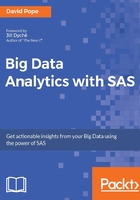
Foreword
"A primary lesson of history is that periodically, and often at the most inconvenient times, society needs to make a sharp break with old habits and deliberately learn new ways of behaving." – Jumping the Curve, by Nicholas Imparato and Oren Harari
For my business partner and me, lunch at iHop always heralded a serious business decision. We had lunch at iHop when we decided to incorporate our consulting firm in 1992. We had lunch there when we decided to hire a CEO. We had lunch again when we decided to fire him. We found ourselves again at iHop in 2011—me nibbling on the Breakfast Sampler, he on the steak and eggs—as we discussed whether to accept an offer to acquire our firm.
We weren't for sale. Our company, Baseline Consulting, was small by management consulting standards, but we were the leaders in the niche field of analytics and data strategy. Larger companies had begun to take notice. A few competitors had reached out by email, a large systems integrator had suggested a meeting "in your office or ours," and software vendors had also come calling. We received an offer from a company that we had worked with and admired, and whose leadership we respected.
The analytics market was booming, business intelligence vendors were blowing out their numbers, and Baseline's growth promised to continue apace. The emergence of data management and curation tools, the explosion of big data, and the adoption of advanced analytics by a new crop of business users—these were just a few bellwethers of rapid industry disruption. Our engagements were getting more complicated, and our deal sizes were growing. We’d have to invest to keep up, or start taking the acquisition offers seriously.
A few short years later, big data, analytics, the cloud, IoT, and artificial intelligence are no longer the purview of tech analysts and vendors. Factories are using analytics and IoT to catch defects before products leave production. Retailers are using cloud applications to push personalized offers to your smartphone. Delivery companies are optimizing their routes, the resulting fuel savings adding double-digit percentages to their bottom lines. Physicians can now monitor a patient's vital signs in real time from their offices or golf courses. Advanced analytics is as close as an app on your tablet or the car in your garage. Your daughter is running regressions in her high school math class. Your son wants to be a data scientist.
Author David Pope, an analytics expert, has written a vital book that not only embraces the analytics industry's trends, but also proselytizes the impact of delivering newfound knowledge with the SAS® software. As the pioneer in advanced analytics and a recognized data management and analytics software leader, SAS stands out as the purveyor of leading-edge solutions in the new analytics economy.
The voice in these pages is no less authoritative than his message. David has worked for SAS for 26 years and has been on the frontlines of some of the industry's most cutting-edge use cases. In Big Data Analytics with SAS, he delivers a veritable toolbox of the techniques companies will be using to realize their digital futures. Users new to SAS and SAS veterans alike will recognize some of the book's themes and embrace its best practices.
I've always been a believer in a best-of-breed approach, choosing the right tool for the job. Amidst the din of vendor hype and the buzzword-du-jour, companies need to deliver insights of value—and quickly. There are more vendor choices than ever. David nimbly navigates the alleyways of software selection and usage, explaining how analytics is deployed and managed the right way. This alone is worth the price of admission.
As my partner and I tucked into our lunches, we deliberated about the future of our business and what was best for our employees. Could we grow at the rate of the industry? Could we stay ahead of it? Were there companies that could get us there faster, cultivating our talent while providing learning opportunities, and a channel for growth? We concluded that, all things considered, SAS would be the best choice.
We have no regrets choosing SAS. And neither will you. Happy reading!
Jill Dyché Author of The New IT